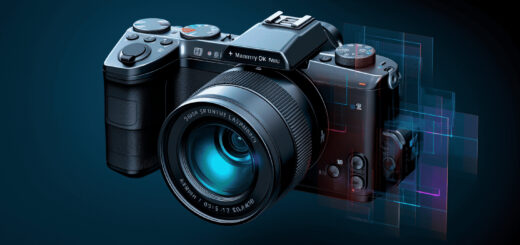Choosing the Right Camera: A Guide for Aspiring Photographers
Choosing the right camera can be a daunting task, especially for aspiring photographers who are just starting out. With so many options available in the digital camera market, it’s easy to feel overwhelmed and unsure of where to begin. But fear not! This comprehensive guide is here to help you navigate the waters and make an informed decision.
In this article, we will provide an overview of the digital camera market, including global market growth and key figures to be aware of. We will also delve into the various types of cameras available, such as action cameras, DSLRs, 3D cameras, and CMOS cameras. Additionally, we will explore the factors to consider when choosing a camera, including the quality of smartphone cameras, the importance of manual and semi-automatic controls, and the benefits of investing in lenses.
Whether you’re a beginner looking for your first camera or a photography enthusiast looking to upgrade, this guide will equip you with the knowledge you need to find the perfect camera for your needs. Let’s dive in and discover the exciting world of photography together!
Overview of the Digital Camera Market
In today’s tech-savvy world, digital cameras have become an integral part of our lives. From documenting cherished memories to capturing stunning landscapes, these devices allow us to unleash our creativity and preserve moments that matter. With the advancements in technology, the digital camera market has witnessed significant growth and continues to evolve. Let’s delve into the global digital camera market and explore its various segments and key market figures.
Global Market Growth
According to recent projections, the global digital camera market is expected to reach a value of USD 6.51 billion by 2028, growing at a steady CAGR of 4.85%. This growth can be attributed to several factors, including:
- Increasing disposable incomes and the desire for high-quality visual content.
- Rising popularity of social media platforms, which has fueled the demand for visually appealing photographs and videos.
- Technological advancements, such as improved image stabilization and higher resolution capabilities, which enhance the overall user experience.
Action Cameras
Action cameras have gained immense popularity, enabling users to capture their adventurous moments and share them with the world. In 2023, this segment experienced solid growth, with the volume and value of action cameras growing by 13% and 19% respectively. The demand for action cameras is expected to continue its upward trajectory, driven by the increasing interest in outdoor activities and extreme sports.
DSLR Cameras
DSLR cameras have long been a favorite among professional photographers and photography enthusiasts. These high-performance cameras offer exceptional image quality, manual controls, and interchangeable lenses. The DSLR cameras market is expected to reach a value of USD 3.90 billion by 2030, growing at a CAGR of 8.90%. This growth can be attributed to the increasing popularity of photography as a hobby and the demand for professional-grade equipment in various industries.
3D Cameras
The global 3D camera market is anticipated to experience remarkable growth, with a projected CAGR of 30.2% from 2023 to 2032. 3D cameras allow users to capture images and videos with depth perception, providing a more immersive viewing experience. This technology finds applications in industries such as gaming, virtual reality, and healthcare, driving the demand for 3D cameras.
CMOS Cameras
CMOS cameras, known for their low power consumption and high-speed data transfer, have gained significant traction in the digital camera market. By 2033, the global CMOS camera market is projected to reach a value of USD 15.6 billion, growing at a CAGR of 11%. The demand for CMOS cameras can be attributed to their versatility and ability to capture high-quality images in various lighting conditions.
Key Market Figures
To put the growth of the digital camera market into perspective, consider these key figures:
- The digital camera market is expected to grow by USD 3.15 billion from 2022 to 2027.
- By 2023, the market is estimated to reach a value of USD 39.93 billion with a CAGR of 10.7% from 2023 to 2030.
- The global 360-degree camera market is projected to expand at a CAGR of 21.80% from 2023 to 2032.
- The smart camera market size is estimated to grow annually at a CAGR of around 10.14% over the next few years.
- The global CCD camera market is projected to witness steady growth over the forecast period.
The digital camera market is characterized by constant innovation and technological advancements, catering to the diverse needs and preferences of consumers. As the market continues to flourish, we can expect cameras to become even more compact, powerful, and capable of capturing stunning visuals. So, whether you’re a professional photographer or an aspiring enthusiast, the digital camera market offers a range of options to suit your photography needs and preferences.
Factors to Consider When Choosing a Camera
When it comes to choosing a camera, there are several factors to consider. Whether you’re a professional photographer or a hobbyist, finding the right camera can make a significant difference in the quality of your images. In this section, we will explore three key factors to keep in mind when making your decision.
Quality of Smartphone Cameras
In recent years, smartphone cameras have seen vast improvements in image quality. With advanced lenses and powerful image processing capabilities, many smartphones now offer stunning image quality that rivals traditional digital cameras. This makes them a convenient and accessible option for casual photographers.
However, it’s important to note that while smartphone cameras have come a long way, they still have limitations compared to dedicated cameras. Factors like sensor size, lens options, and manual controls can greatly impact the overall quality and flexibility of your photographs. Therefore, it is essential to assess your photography needs and consider whether a smartphone camera will meet them adequately.
Manual and Semi-automatic Controls
One crucial aspect to consider when choosing a camera is the presence of manual and semi-automatic controls. These features allow you to have more control over the exposure, focus, and other settings, giving you the creative freedom to capture the image exactly as you envision it.
Unlike point-and-shoot cameras, which prioritize ease of use and automation, cameras with manual and semi-automatic controls offer a greater level of customization and precision. They enable you to adjust settings such as aperture, shutter speed, ISO, and white balance, giving you the ability to experiment with different techniques and achieve professional-level results.
So, if you are looking to take your photography skills to the next level or have specific creative goals in mind, investing in a camera with manual and semi-automatic controls is highly recommended.
Investing in Lenses
Another factor to consider when choosing a camera is the option to invest in interchangeable lenses. While the camera body is essential, lenses play a significant role in determining the image quality and versatility of your shots.
Camera lenses come in various focal lengths and types, each designed to excel in specific photography genres. Investing in lenses allows you to adapt to different shooting situations, whether it’s capturing wide-angle landscapes, close-up macro shots, or zooming in on distant subjects. Additionally, lenses typically last longer than camera bodies and can be used with future camera upgrades, making them a wise long-term investment.
Remember, the choice of lenses depends on your photography preferences and needs. Consider factors such as focal length, aperture range, and lens compatibility with the camera system you choose.
By considering these factors, you can make an informed decision when choosing a camera that best suits your photography goals and preferences. Whether you opt for a smartphone camera or a dedicated digital camera, the key is to find the right balance between convenience, control, and image quality. Happy shooting!
Conclusion
Choosing the right camera can be a daunting task, but armed with the right knowledge and understanding of your needs, you can make an informed decision. Consider factors such as the quality of smartphone cameras, the availability of manual and semi-automatic controls, and the potential for investing in additional lenses. By taking these factors into account, you can find a camera that is perfect for your photography journey.
Remember, the world of photography is vast and ever-evolving. It’s important to stay curious and keep learning. And if you’re looking for inspiration, tutorials, reviews, and tips, don’t forget to visit Wimarys.com, a website dedicated to photography and cameras, run by Wim Arys, a talented photographer from Brussels, Belgium. Discover the exciting world of photography and capture unforgettable moments with the guidance and expertise available at Wimarys.com. Happy shooting!
Check out Wimarys.com for helpful articles, camera reviews, and inspiration for your photography projects.
Frequently Asked Questions
- What factors should I consider when choosing a camera?
When choosing a camera, consider factors such as your budget, the type of photography you’ll be doing, your skill level, desired features (e.g., image resolution, autofocus system, ISO range), ergonomics, and compatibility with lenses and accessories.
- Should I buy a DSLR or a mirrorless camera?
Both DSLR and mirrorless cameras have their advantages. DSLRs offer a wider range of compatible lenses, longer battery life, and optical viewfinders. Mirrorless cameras are usually more compact, have faster autofocus systems, and offer better video capabilities. Consider your preferences and needs to make the right choice.
- What is the difference between APS-C and full-frame sensors?
APS-C sensors are smaller than full-frame sensors, resulting in a narrower field of view and a crop factor. Full-frame sensors offer better low-light performance, larger dynamic range, and shallower depth of field. Consider your shooting style, budget, and desired image quality when choosing between the two.
- Do megapixels matter when choosing a camera?
Megapixels determine the resolution of the images you can capture. While higher megapixels can be beneficial for large prints or cropping, it’s not the sole factor affecting image quality. Factors like sensor size, lens quality, and image processing also play significant roles.
- Should I prioritize image stabilization when choosing a camera?
Image stabilization is beneficial for reducing camera shake and capturing sharper images, especially in low-light conditions or when using long focal lengths. Consider whether you’ll be shooting handheld often and whether the camera body or lens offers built-in stabilization when making your decision.



